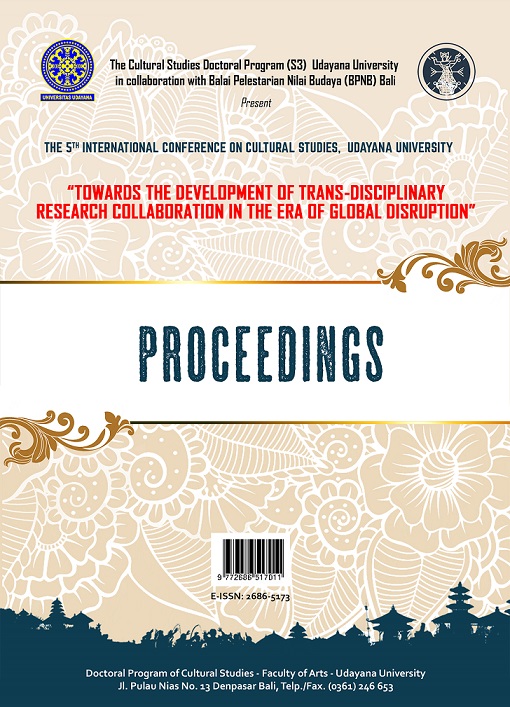THE USE OF NSM AND CULTURAL SCRIPTS THEORY IN EXPLICATING THE CATEGORY OF MARAPU: A TRADITIONAL ANIMIST BELIEF OF SUMBANESE
Abstract
As the followers of Marapu keep on believing that the source of life comes from this god, they realized that Marapu has several categories according to its function. Due to the divisions of marapu, this research explains the meaning of each category and explicated them clearly to the cultural outsiders by using the theory of cultural scripts proposed by Anna Wierzbicka, particularly natural semantic metalanguage method. Several categories were analyzed as the sample of the research, namely High Deity, the spirit of ancestor, the spirit of death, the spirit of plant and animal magical power. The result shows that each category of the Marapu has its own main roles and meaning. High deity, for example, is regarded as the creator of everything and the protector. The spirit of the ancestor, on the other hand, plays a role as the mediator between human and the highest god. The spirit of the death only functions as the companion and the keeper of the land, while the spirit of the plant and animal’s magical power functions as the mediator between Marapu and the men.
Downloads
References
Solihin, Lukman, 2009, The marapu belief: divine concept and the sumbanese’s view on ancestors, melayu online, viewed 11 november 2012,
Wellem, Frederik Djara, 2004, Injil dan marapu suatu studi historis-teologis tentang perjumpaan injil dengan masyarakat sumba pada periode 1876-1990, Gunung Mulia. Jakarta
Wierzbicka, Anna, 2003, Cross cultural pragmatics the semantics of human interaction, Mouton de Gruyter, Berlin.
Wierzbicka, Anna, 2006, English Meaning and Culture, Oxford University Press, Oxford.
Wikipedia, 2012, Sumba, Wikimedia foundation, viewed 11 November 2012,





